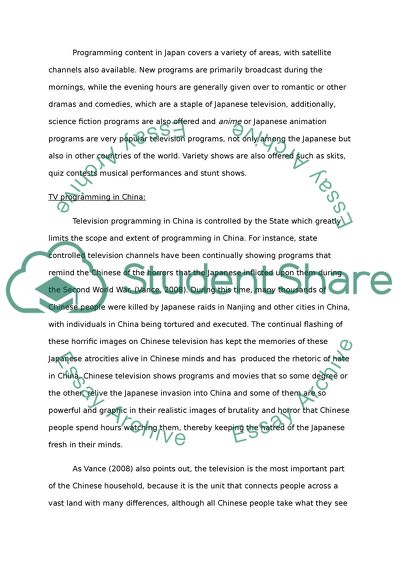Cite this document
(“Comparison of Chinese and Japanese TV Essay Example | Topics and Well Written Essays - 1500 words”, n.d.)
Comparison of Chinese and Japanese TV Essay Example | Topics and Well Written Essays - 1500 words. Retrieved from https://studentshare.org/media/1555710-comparison-of-chinese-and-japanese-tv
Comparison of Chinese and Japanese TV Essay Example | Topics and Well Written Essays - 1500 words. Retrieved from https://studentshare.org/media/1555710-comparison-of-chinese-and-japanese-tv
(Comparison of Chinese and Japanese TV Essay Example | Topics and Well Written Essays - 1500 Words)
Comparison of Chinese and Japanese TV Essay Example | Topics and Well Written Essays - 1500 Words. https://studentshare.org/media/1555710-comparison-of-chinese-and-japanese-tv.
Comparison of Chinese and Japanese TV Essay Example | Topics and Well Written Essays - 1500 Words. https://studentshare.org/media/1555710-comparison-of-chinese-and-japanese-tv.
“Comparison of Chinese and Japanese TV Essay Example | Topics and Well Written Essays - 1500 Words”, n.d. https://studentshare.org/media/1555710-comparison-of-chinese-and-japanese-tv.


